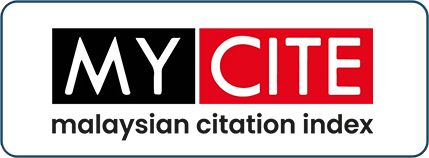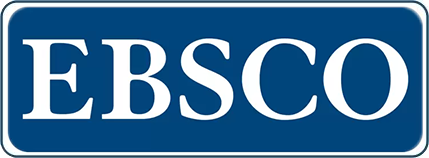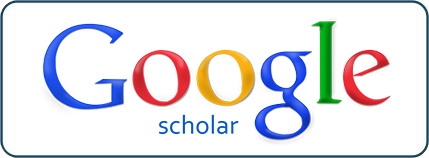Human Stem Cell Transplantation: An Overview Of The Islamic Perspective's Ethical Issues In Malaysia
DOI:
https://doi.org/10.33102/jfatwa.vol28no3.515Keywords:
stem cell, ethical, Islamic, MalaysiaAbstract
Stem cells have unprecedented promise for treating disorders that are not amenable to conventional treatment because of their special capacity to maintain, replenish, and repair all tissue types. Stem cell research is currently surrounded by several pressing ethical and challenges as a result of the quick development of biotechnology. Therefore, the purpose of this study is to find out the ethical issues regarding the use of stem cells and correlate from an Islamic perspective, focusing on Malaysia. In this review, we outline an overview of the most significant ethical issues with stem cell application that the community especially Muslims should be aware of. The study applied a library-based methodology and gathered data about stem cells, their use, ethical concerns, and Islamic law with an emphasis on Malaysia from a range of sources, including books, websites and journals. The findings demonstrated that there are three main areas of ethical concern for stem cell technology from an Islamic perspective: human embryonic stem cells, stem cells used for aesthetic purposes, and stem cells used for therapeutic medicine. We attempted to correlate Malaysia's perspective with some of the Islamic perspective's points on all ethical concerns. We discovered that there are certain arguments towards every ethical issue from an Islamic perspective, and we tried to compare it to the perspective from Malaysia. Both the use of current ethical frameworks and careful evaluation from an Islamic perspective are important as this vast and diverse area of stem cell technology progresses, especially in Malaysia.
Downloads
References
Alatyyat, S. M., Alasmari, H. M., Aleid, O. A., Abdel-Maksoud, M. S., & Elsherbiny, N. (2020). Umbilical cord stem cells: Background, processing and applications. Tissue & cell, 65, 101351. https://doi.org/10.1016/j.tice.2020.101351
E-fatwa, Bahagian Pengurusan Fatwa, Jabatan Kemajuan Islam Malaysia (2012). Hukum Pengklonan Terapeutik Dan Penyelidikan Sel Stem (Stem Cell). Retrieved from http://e-smaf.islam.gov.my/e-smaf/fatwa/fatwa/find/pr/11820
Elmaadawi, I. H., Mohamed, B. M., Ibrahim, Z. A. S., Abdou, S. M., El Attar, Y. A., Youssef, A., Shamloula, M. M., Taha, A., Metwally, H. G., El Afandy, M. M., & Salem, M. L. (2018). Stem cell therapy as a novel therapeutic intervention for resistant cases of alopecia areata and androgenetic alopecia. The Journal of dermatological treatment, 29(5), 431–440. https://doi.org/10.1080/09546634.2016.1227419
Fadilah, S. A., Leong, C. F., & Cheong, S. K. (2008). Stem cell transplantation in Malaysia and future directions. The Medical journal of Malaysia, 63(4), 279–280.
Fukuoka, H., & Suga, H. (2015). Hair Regeneration Treatment Using Adipose-Derived Stem Cell Conditioned Medium: Follow-up With Trichograms. Eplasty, 15, e10.
Fukuoka, H., Narita, K., & Suga, H. (2017). Hair Regeneration Therapy: Application of Adipose-Derived Stem Cells. Current stem cell research & therapy, 12(7), 531–534. https://doi.org/10.2174/1574888X12666170522114307
Gan, G., Teh, A., Chan, L., Cheong, S., Chang, K., & Ibrahim, H. (2008). Bone marrow and stem cell transplantation: Malaysian experience. Bone marrow transplantation, 42 Suppl 1, S103–S105. https://doi.org/10.1038/bmt.2008.129
Gentile P. (2019). Autologous Cellular Method Using Micrografts of Human Adipose Tissue Derived Follicle Stem Cells in Androgenic Alopecia. International journal of molecular sciences, 20(14), 3446. https://doi.org/10.3390/ijms20143446
Gentile, P., Scioli, M. G., Cervelli, V., Orlandi, A., & Garcovich, S. (2020). Autologous Micrografts from Scalp Tissue: Trichoscopic and Long-Term Clinical Evaluation in Male and Female Androgenetic Alopecia. BioMed research international, 2020, 7397162. https://doi.org/10.1155/2020/7397162
Imran, S. A. M., M Hamizul, M. H. A., Khairul Bariah, A. A. N., Wan Kamarul Zaman, W. S., & Nordin, F. (2022). Regenerative Medicine Therapy in Malaysia: An Update. Frontiers in bioengineering and biotechnology, 10, 789644. https://doi.org/10.3389/fbioe.2022.789644
Jabatan Mufti Negeri Selangor Darul Ehsan (2012). Hukum Pengklonan Terapeutik Dan Penyelidikan Sel Stem (Stem Cell). Retrieved from: https://www.muftiselangor.gov.my/fatwa-tahunan/pewartaan/2005-2009/165-hukum-pengklonan-terapeutik-dan-penyelidikan-sel-stem-stem-cell
Junaidi M, Nurhayati N, Budiwati S. (2022). The Use of Stem Cells for Beauty Therapy Islamic Law Perspective.;23624–31. Budapest International Research and Critics Institute-Journal (BIRCI-Journal), 5(3), 23624-23631 DOI: https://doi.org/10.33258/birci.v5i3.6377
Kolios, G., & Moodley, Y. (2013). Introduction to stem cells and regenerative medicine. Respiration; international review of thoracic diseases, 85(1), 3–10. https://doi.org/10.1159/000345615
Lennard, A. L., & Jackson, G. H. (2000). Stem cell transplantation. BMJ (Clinical research ed.), 321(7258), 433–437. https://doi.org/10.1136/bmj.321.7258.433
Muhamad Rafiqi Hehsan. Q&A Fiqh Perubatan (2014). PTS Publisher.
Nishakanthi G. (2019). The Shortage of Malaysian Stem Cell Ethics in Mainstream Database: a Preliminary Study. Asian bioethics review, 11(4), 437–460. https://doi.org/10.1007/s41649-019-00102-5
Pejabat Mufti Wilayah Persekutuan. Bayan Linnas Siri Ke-227 (2020): Penggunaan Sel Stem Dalam Perubatan Menurut Perspektif Syarak. Retrieved from: https://muftiwp.gov.my/artikel/bayan-linnas/4362-bayan-linnas-siri-ke-227-penggunaan-sel-stem-dalam-perubatan-menurut-perspektif-syarak
Perez-Meza, D., Ziering, C., Sforza, M., Krishnan, G., Ball, E., & Daniels, E. (2017). Hair follicle growth by stromal vascular fraction-enhanced adipose transplantation in baldness. Stem cells and cloning : advances and applications, 10, 1–10. https://doi.org/10.2147/SCCAA.S131431
Poliwoda, S., Noor, N., Downs, E., Schaaf, A., Cantwell, A., Ganti, L., Kaye, A. D., Mosel, L. I., Carroll, C. B., Viswanath, O., & Urits, I. (2022). Stem cells: a comprehensive review of origins and emerging clinical roles in medical practice. Orthopedic reviews, 14(3), 37498. https://doi.org/10.52965/001c.37498
Rakel RE. Therapeutics. Retrieved from: https://www.britannica.com/science/therapeutics
Sivaraman M. A. F. (2018). Using Surplus Embryos and Research Embryos in Stem Cell Research: Ethical Viewpoints of Buddhist, Hindu and Catholic Leaders in Malaysia on the Permissibility of Research. Science and engineering ethics, 24(1), 129–149. https://doi.org/10.1007/s11948-017-9893-3
Tachibana, M., Amato, P., Sparman, M., Gutierrez, N. M., Tippner-Hedges, R., Ma, H., Kang, E., Fulati, A., Lee, H. S., Sritanaudomchai, H., Masterson, K., Larson, J., Eaton, D., Sadler-Fredd, K., Battaglia, D., Lee, D., Wu, D., Jensen, J., Patton, P., Gokhale, S., … Mitalipov, S. (2013). Human embryonic stem cells derived by somatic cell nuclear transfer. Cell, 153(6), 1228–1238. https://doi.org/10.1016/j.cell.2013.05.006
Zakrzewski, W., Dobrzyński, M., Szymonowicz, M., & Rybak, Z. (2019). Stem cells: past, present, and future. Stem cell research & therapy, 10(1), 68. https://doi.org/10.1186/s13287-019-1165-5
Downloads
Published
Issue
Section
License
Copyright (c) 2023 Muhamad Rafiqi

This work is licensed under a Creative Commons Attribution 4.0 International License.
The copyright of this article will be vested to author(s) and granted the journal right of first publication with the work simultaneously licensed under the Creative Commons Attribution 4.0 International (CC BY 4.0) license, unless otherwise stated.















